Articles
The Future of the Retail Front End: Smart, Seamless, and Shopper-First
See how retail front end is evolving with smart tech, personalization, and seamless checkout—turning shopper expectations into competitive advantages.
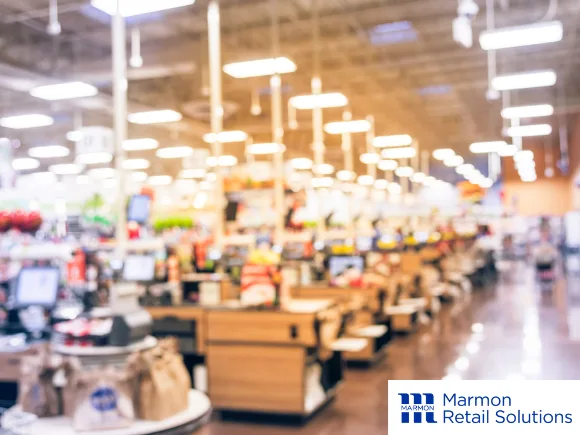
The front end is quickly becoming one of the most strategic—and scrutinized—zones in retail. Shaped by new technology and changing shopper expectations, it’s no longer just a place for customers to check out and depart. It’s a strategic zone where retailers have a key opportunity to generate satisfaction, loyalty, and long-term engagement.
“The front end shapes how customers feel about their shopper journey,” says Chad Widdison, senior manager at retail consulting firm Flywheel Digital.
With Widdison’s help, we’ll examine the latest innovations transforming this space—and explore how forward-thinking retailers are making the front end smarter, faster, and more personalized. But first, let’s establish what exactly the front end is.
What is the Retail Front End?
The typical retail front end encompasses all customer-facing areas that bookend the in-store journey. That includes checkout lanes (cashier or self-serve), the customer service desk, impulse merchandising, and the primary entries and exits. Many front ends also include pickup areas for click and collect orders.
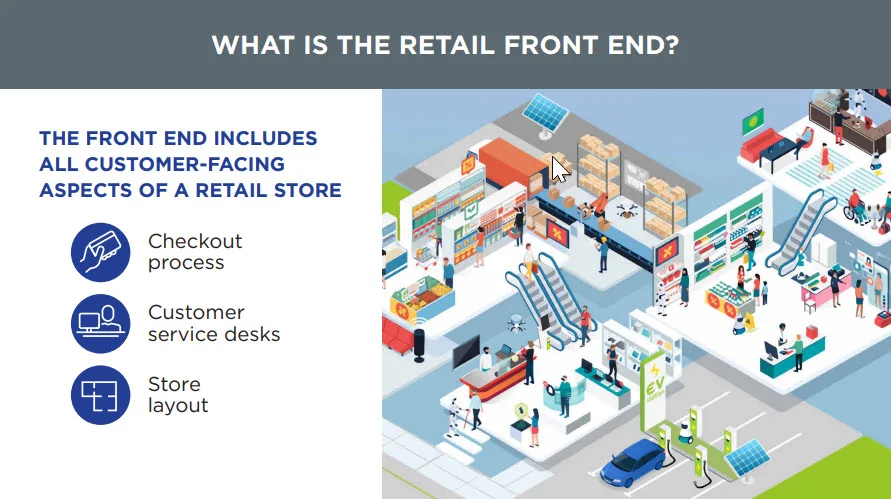
Why the Front End Matters More Than Ever
Broadly understood, the retail front end is where operational logistics meet customer expectations. More than any other zone, the front end shapes first and last impressions. And as shopper demands intensify, retailers are rethinking how to optimize it.
Consider the potential impact of the front end:
- Generates lasting satisfaction and brand trust
- Guides customers toward making more purchases—more efficiently
- Creates positive first impressions
- Reduces wait times
- Leaves customers with a satisfied feeling when they depart
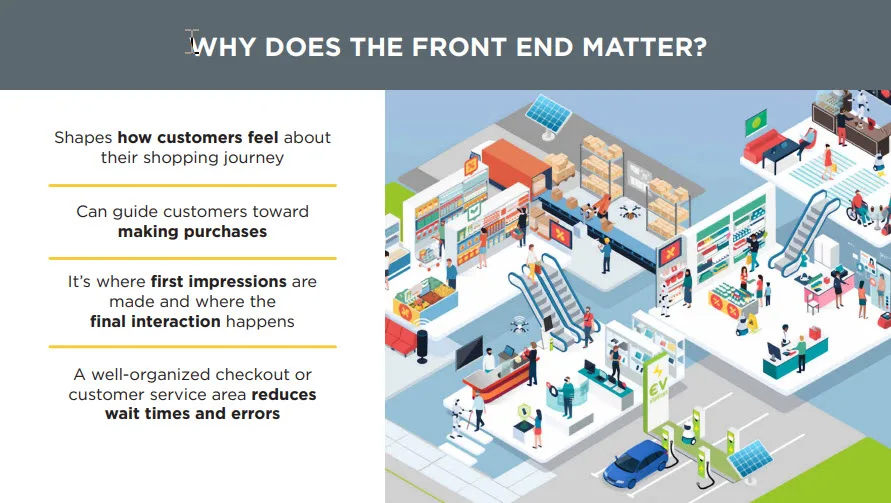
“Ultimately,” says Widdison, “a seamless, convenient, and personalized front end experience is what keeps customers coming back.”
But creating that experience also comes with challenges, especially given the growing importance of omnichannel retail.
The Front End’s New Role in the Omnichannel Journey
The front end is playing a growing role in how retailers deliver on the promises of an omnichannel world. And shoppers aren’t shy about what they want.
According to survey data shared by Widdison, more and more customers expect a seamless blend of digital and physical experiences:
What in-store experiences shoppers want online:
- Immediately get the item (48%)
- Browse with ability to touch and feel items (47%)
- Preview or try product before buying (41%)
What online experiences they want in-store:
- No checkout lines (45%)
- 24/7 shopping (42%)
- Easy inventory search (28%)
“Understanding why omnichannel shoppers choose one channel over the other helps retailers bridge the gap, delivering experiences that combine the best of both worlds,” explains Widdison.
So how are retailers meeting the desires of these shoppers—particularly at the front end?
New Tactics and Technology for a “Connected Commerce Experience”
By integrating digital tools, streamlining fulfillment, and offering more shopper control, successful retailers are building what Widdison calls “a connected commerce experience.” And with that comes a push for automation—not just to reduce costs, but to improve speed, accuracy, and personalization for customers.
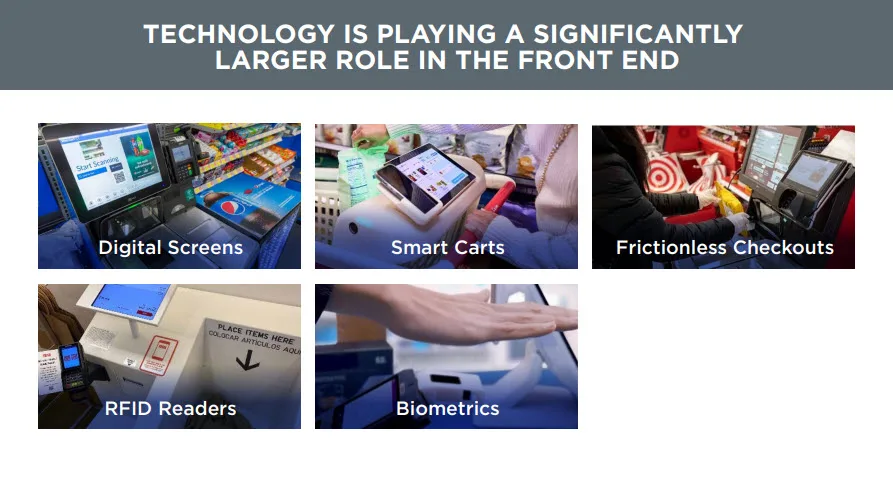
More specifically, to meet rising customer expectations, retailers are deploying technologies like these:
- Smart screens with real-time promotions, inventory updates, and wayfinding
- AI-enabled smart carts to scan purchased products and show personalized promotions
- RFID readers for full-basket, touchless checkout
- Biometric pay via palm or facial recognition
- Visual sensors to optimize traffic flow and staffing
- Retail media for monetizing digital ads and promotions
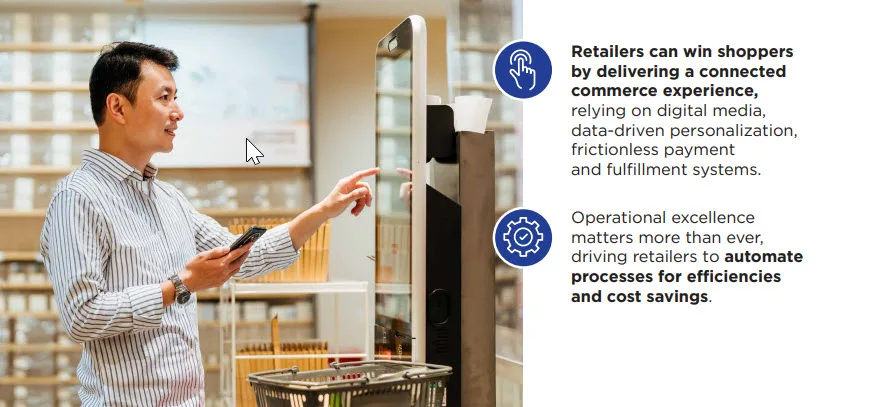
Widdison says that as technologies continue to improve, “it’s helping stores become more convenient, more personalized, and more efficient, while also giving brands new ways to connect with shoppers right at the point of decision.”
Technology in Focus: Rethinking Checkout for a Frictionless Experience
Checkout is no longer just a functional necessity—it’s your chance to reduce friction, build loyalty, and drive efficiency.
That’s why today’s leading retailers are reimagining it with next-gen tools like:
- Just walk out tech. Computer vision that tracks purchases in real time
- Smart carts. AI-enabled carts offering instant scanning and even serve up ads
- RFID self-checkouts. Full-cart scans in seconds
- Biometric payment. Fast, secure transactions in high-traffic settings
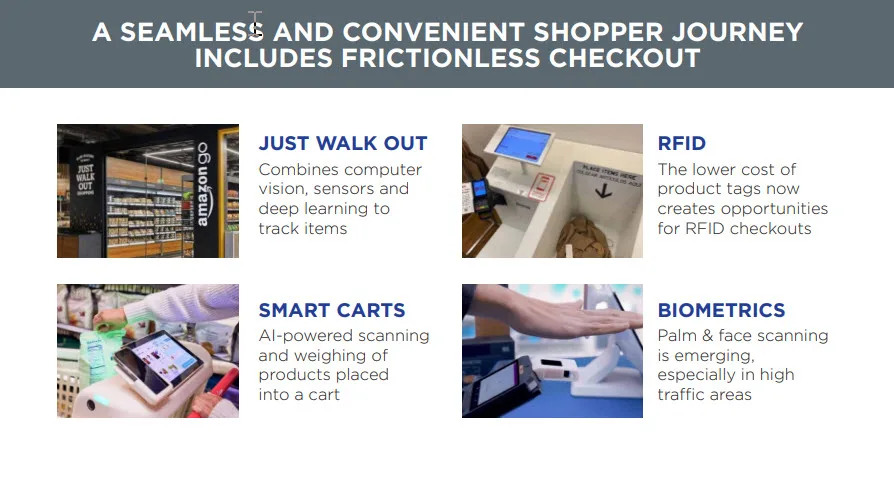
“These advances aren’t just about convenience,” explains Widdison. “They also reduce labor costs and improve accuracy.”
Key Takeaways: The Front End’s Strategic Future
The front end is no longer a passive checkout zone. It’s becoming a proactive platform for conversion, loyalty, and media engagement.
Retailers that transform the front end with automation, personalization, and digital merchandising will gain more than speed—they’ll gain shopper trust, incremental revenue, and a competitive edge.
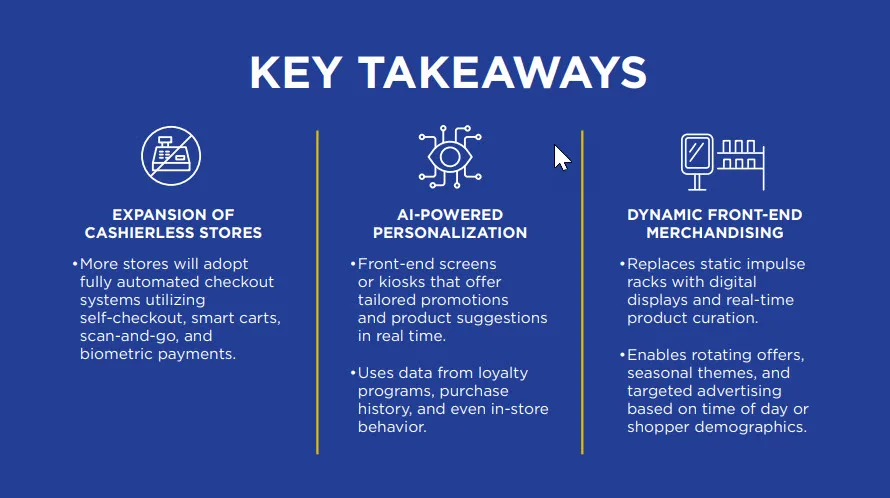
Watch for these front end trends gaining momentum:
Cashierless Stores
More stores are embracing automation with smart carts, self-checkout, scan-and-go, and biometric pay. These formats reduce or eliminate checkout friction in high-traffic settings.
AI-Powered Personalization
Smart screens and kiosks can serve up targeted promotions based on loyalty program data, previous purchases, or even current location within the store.
Dynamic Digital Merchandising
Instead of static displays, impulse areas now feature real-time digital ads. These can rotate based on time of day, season, or shopper profile—keeping content fresh and conversion-focused.
“Expect front ends to become more automated, more intelligent, and more personalized by the month,” says Widdison.
Learn more about how these retail solutions can work for you.